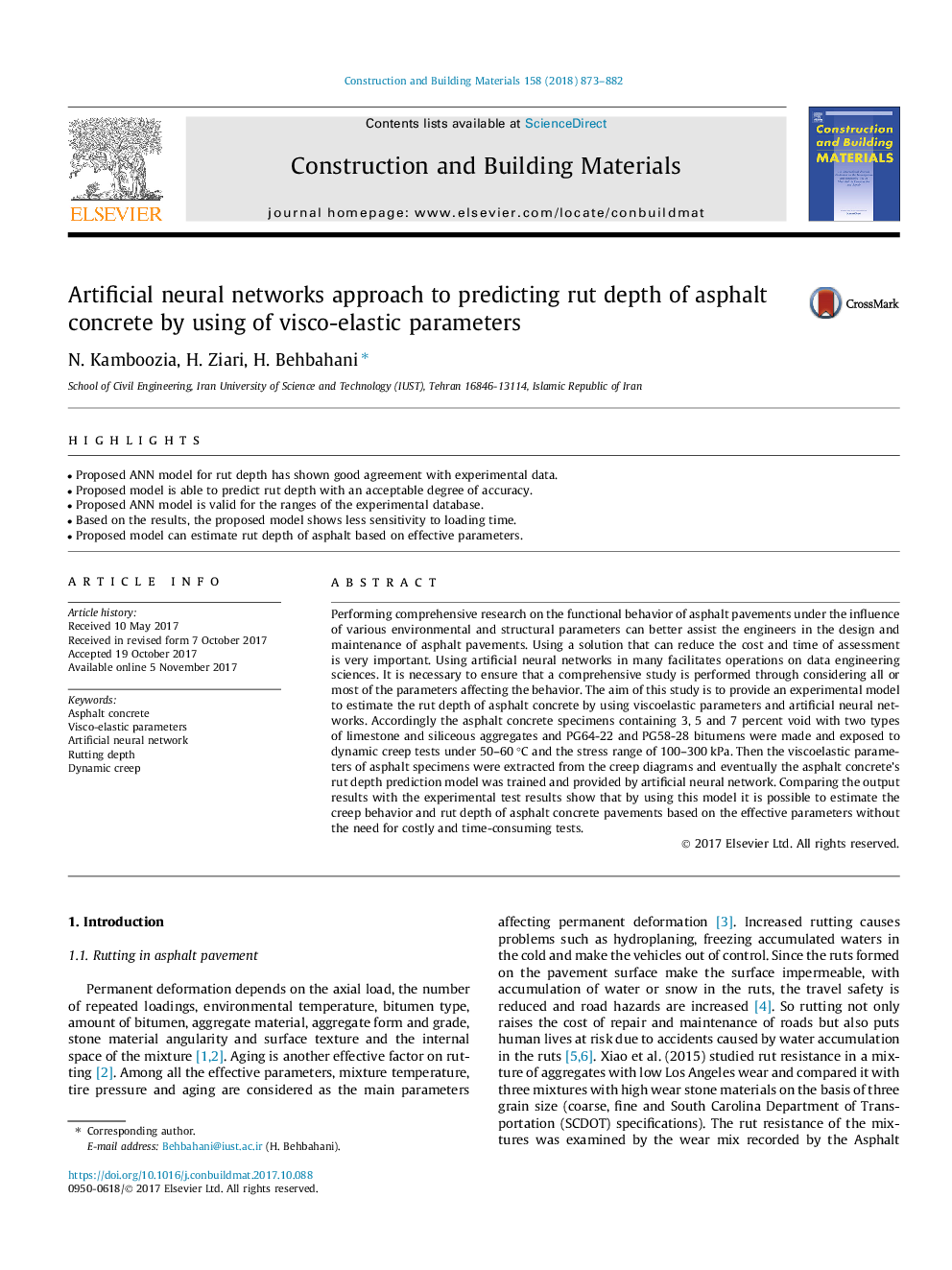| Article ID | Journal | Published Year | Pages | File Type |
|---|---|---|---|---|
| 6717691 | Construction and Building Materials | 2018 | 10 Pages |
Abstract
Performing comprehensive research on the functional behavior of asphalt pavements under the influence of various environmental and structural parameters can better assist the engineers in the design and maintenance of asphalt pavements. Using a solution that can reduce the cost and time of assessment is very important. Using artificial neural networks in many facilitates operations on data engineering sciences. It is necessary to ensure that a comprehensive study is performed through considering all or most of the parameters affecting the behavior. The aim of this study is to provide an experimental model to estimate the rut depth of asphalt concrete by using viscoelastic parameters and artificial neural networks. Accordingly the asphalt concrete specimens containing 3, 5 and 7 percent void with two types of limestone and siliceous aggregates and PG64-22 and PG58-28 bitumens were made and exposed to dynamic creep tests under 50-60â¯Â°C and the stress range of 100-300â¯kPa. Then the viscoelastic parameters of asphalt specimens were extracted from the creep diagrams and eventually the asphalt concrete's rut depth prediction model was trained and provided by artificial neural network. Comparing the output results with the experimental test results show that by using this model it is possible to estimate the creep behavior and rut depth of asphalt concrete pavements based on the effective parameters without the need for costly and time-consuming tests.
Related Topics
Physical Sciences and Engineering
Engineering
Civil and Structural Engineering
Authors
N. Kamboozia, H. Ziari, H. Behbahani,
